Race analysis by Nick Bull
Nineteen days. Just nineteen days. That’s how recently Egan Bernal and Team INEOS shed what was left from the invincibility cloak they had worn since last year’s Tour de France on the slopes of the Col de Porte. If they weren’t beatable at La Route d’Occitanie, the Tour de l’Ain at the start of last month unsubtly suggested it, then the Critérium du Dauphiné’s first foray into the mountains on 12 August proved it.
Chris Froome didn’t contribute to the team’s much maligned pacesetting before being dropped with 4.5 kilometres remaining that day in the Dauphiné. Geraint Thomas chipped in with a 1,000-metre turn on the front.
Of course, INEOS’s rejigged mountain corps for the Tour is, at worst, the second best support unit for a GC contender in the race. Offer that train to Julian Alaphilippe (who also looked out-of-form on the Col de Porte, dropped 1,500 metres earlier than Froome) or Thibaut Pinot; any polite rejection would surely only be out of loyalty to existing team-mates.
By virtue of hosting the first summit finish of the Tour on Tuesday, Orcières-Merlette provided a useful battleground upon which we can analyse INEOS’s tactical tweaks since the Dauphiné. Handily, its average gradient (6.7%) that matches up fairly well with the Col de Porte’s (6.2%), although the latter climb is 10.4km longer by ASO’s metrics. The results are in – and they only pose more questions than they provide answers.
Thirteen seconds. Just 13 seconds. That’s how long any INEOS rider (Michal Kwiatkowski) was at the head of the peloton for on the final climb today. Of course, Pavel Sivakov’s injuries sustained on the opening days have to be considered (the Russian was dropped on the Côte de Saint-Léger-les-Mélèzes climb with 22 kilometres remaining). So to the personnel change that saw Richard Carapaz give up a defence of his Giro d’Italia crown in favour of becoming a super-domestique here (he was the second INEOS rider across the line today, 28 seconds behind Primoz Roglic). Based on his previous season objective, he shouldn’t come good until next week at the earliest.
INEOS are seemingly playing a GC by attrition game once again – or at least that’s the PR line. Bernal told the team website: “Our aim is to reach the third week without losing too much time, and then try and regain a bit of time on the long climbs. For us, it will be all about minimising the time lost and arriving as fresh as we can for the last week.”
This approach is in stark contrast to their tactics of old – all of their Tour de France winners between 2012 and 2018 were in the maillot jaune after the first summit finishes, if not earlier. (Thomas two years ago took over the race lead on stage 11, later than Bradley Wiggins or Froome ever did). Of course, in two of the last three Grand Tours INEOS have won (Giro 2018, Tour 2019), both Froome and Bernal only moved into the race lead after stage 19. Paris is still – whisper it quietly – 19 days away. Only time will tell if the defending champion is off the pace, or if his coaching team have mastered the preparation for this most atypical of cycling seasons.
6.5KM TO GO
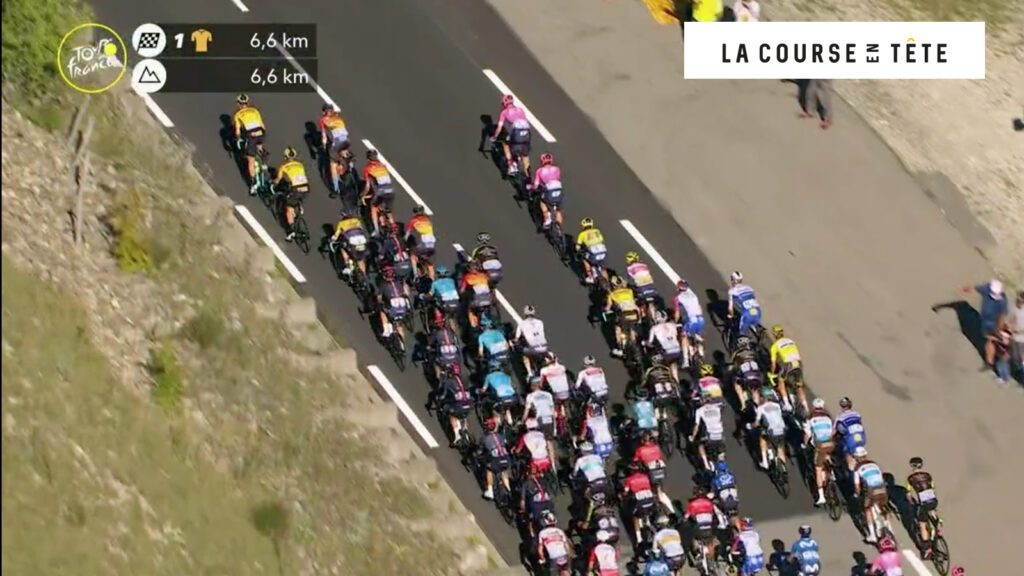
There’s a slight Dauphiné-esque feel to proceedings as the peloton start climbing. INEOS have numbers at the front of the bunch and are organised. As was the case on the Col de Porte, Dylan van Baarle is at the head of their line. Kwiatkowski, Bernal, Richard Carapaz, Jonathan Castroviejo and Andrey Amador sit behind him. Team Jumbo-Visma’s Tony Martin is nearing the end of his turn at the front of the peloton.
However, as the riders hit the steepest section of the climb, Bernal drops back down the pack. “I think it was a good climb to see how the GC riders are,” he told the team website.
For the record, Bahrain-McLaren’s presence at the head of the peloton also goes without significant reward come the finish: Mikel Landa finishes ninth, two places behind Bernal.
3.4KM TO GO

Wout van Aert takes over at the head of the peloton, beginning a two-kilometre turn that reduces the peloton from 58 riders to just 34. Kwiatkowski and Castroviejo sit just behind, but Bernal is still lurking a lot further down the line. Being able to see your rivals has its benefits, but sitting back is not a tactic that Froome or Thomas were known for during their successful Tour campaigns. By contrast, Roglic says in his TV interview after the stage that he was “all the time in a good position”. Carapaz is the fourth INEOS rider left in the group at this point, but he doesn’t show himself towards the head of the race at any point.
2.5KM TO GO
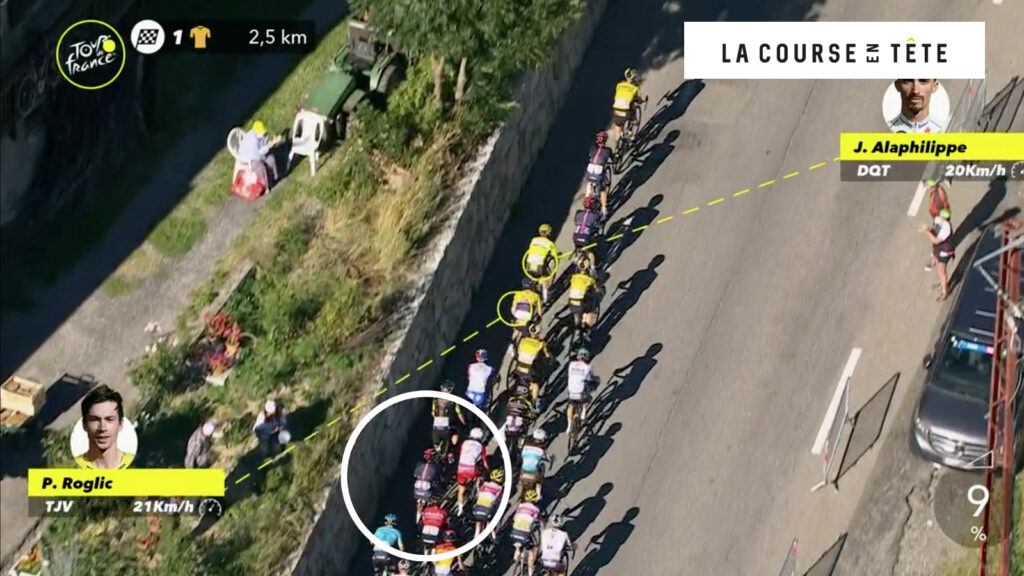
Bernal still hasn’t put his nose in the wind, but he has moved up to ninth in line. Immediately ahead of him are Adam Yates, Pinot, Primoz Roglic and Alaphilippe.
2.2KM TO GO
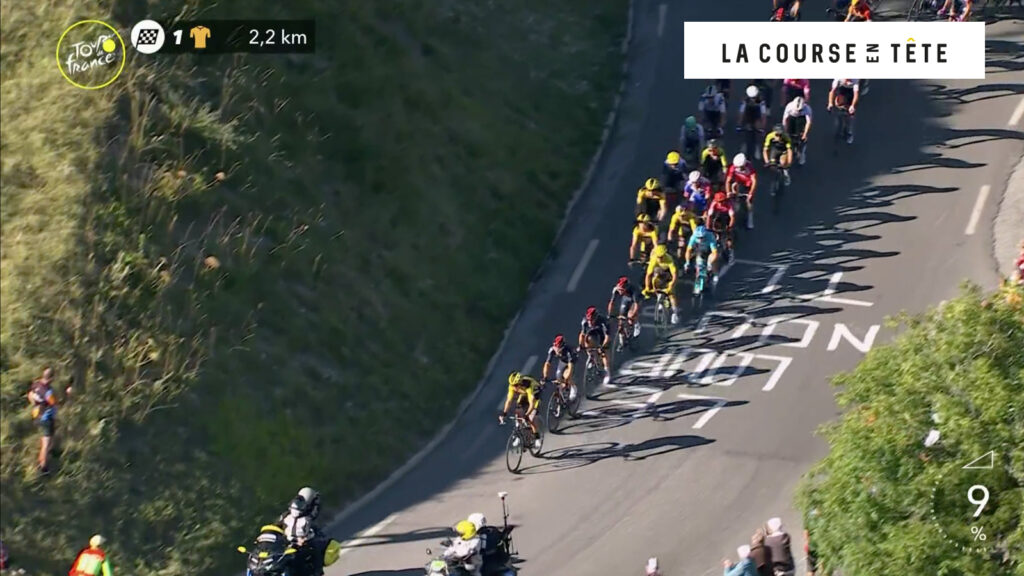
Signs of life from Bernal, who cleverly uses the hairpin that takes the riders onto Les Veyers to move up in line. He tucks in behind Kwiatkowski and Castroviejo following this acceleration. For a minute or so, INEOS look like the Sky of old: lined up and ready to attack.
1.4KM TO GO
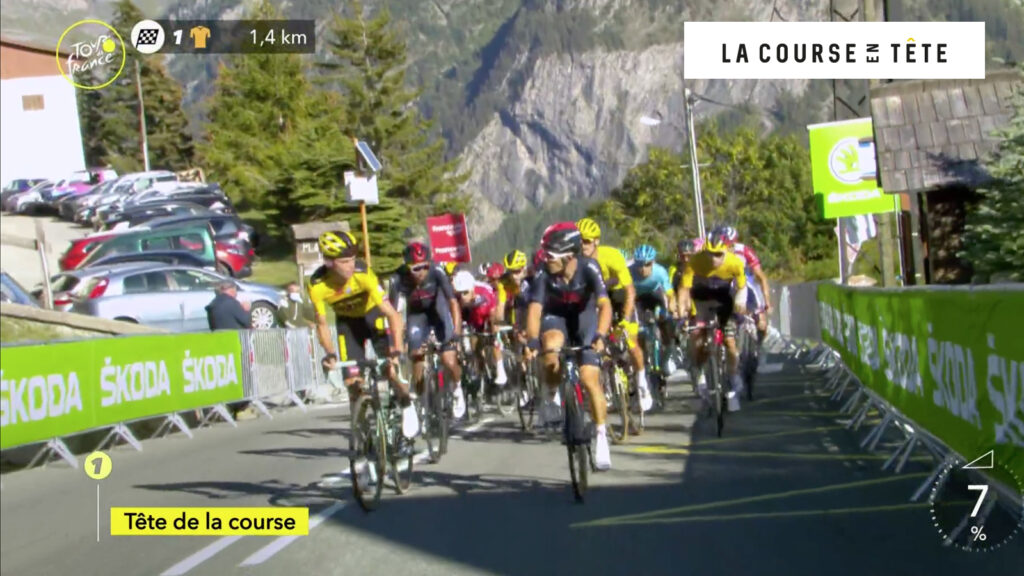
Van Aert peels off after his huge effort. Kwiatkowski comes to the front for his aforementioned 13 seconds, but the pace seemingly slows. This triggers Roglic’s team-mate Sepp Kuss to take over at the head of the group; the two domestiques take part in a passing glance at one another as opposed to a full Changing of the Guard ceremony. Kuss’ acceleration puts paid to any hopes Bernal had of utilising Castroviejo. Seconds after showing the TV cameras his gritted teeth and a slight shake of the head, he, too, is dropped.
500M TO GO
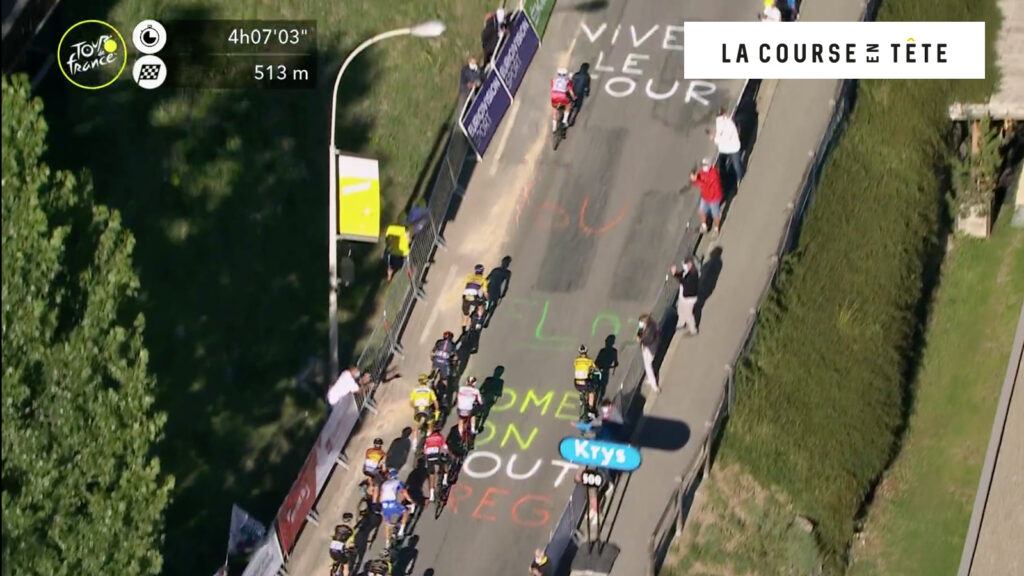
Guillaume Martin’s attack signals the end of Kuss’ pacesetting. Roglic is the first to respond, but, Bernal, in his wheel, initially looks to be equal to it. However, by the time the leaders pass by the 350m to go marker, Alaphilippe, Tadej Pogačar and Nairo Quintana have tellingly all moved ahead of him in line.
200M TO GO
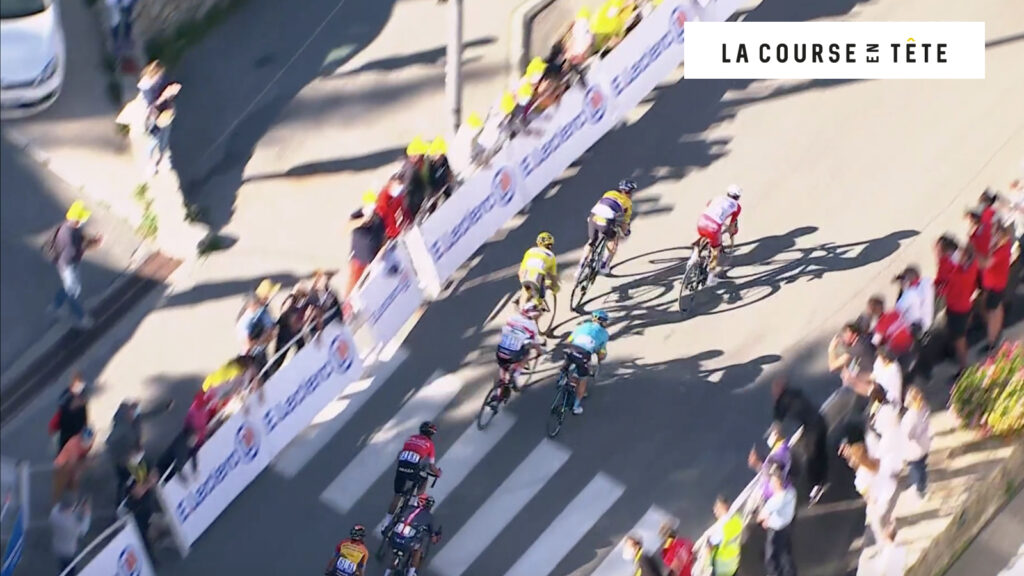
Reminiscent of the Dauphiné stage to Saint-Martin-de-Belleville, Roglic is unbeatable in a sprint finish between climbers. That day (in the battle for second) it was Pinot and Emanuel Buchman behind him across the finish; here Pogačar and Martin are his nearest challengers, although that’s being kind. The Slovenian wins comfortably, his favourite status remains intact. Bernal crosses the line in seventh. “It is not good when another GC rider takes some seconds, but you need to be really patient,” he said.
Of course, the disclaimer that this was only day four of the 2020 Tour stands. The modern style of racing, combined with Orcières-Merlette’s easier gradient in comparison with what awaits before Paris, mean it was never going to be a repeat of Ocaña versus Merckx from 1971. Today’s stage was the pre-fight press conference ahead of a 12-round bout. It goes without saying that it more than served its purpose: that of whetting the appetite for the weekend’s foray into the Pyrenees. Excitingly, the next opportunity to scrutinise the tactics of INEOS is just days away.
You can find more of Nick Bull’s race analysis on Twitter
Main photo: © SWpix.com

